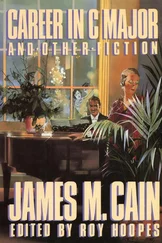“What stuff?”
“Why... your drills. Your bits.”
“What for?”
By the way his eyes bored into me, I knew I’d pretty near overplayed it. But I acted surprised, and said: “To see the color, how they’re tempered for the rock you’re busting. That is, unless you want some broken shanks before I see what I’m up against.”
“O.K., O.K.”
Just the least thing that sounded like I might know my business was all he wanted to hear, and the next thing the three of us, Buck, Hosey, and me, were in the cook shack, putting away sow belly, beans, flapjacks, and coffee with plenty of sugar and condensed milk in it, something we hadn’t tasted in months. I’ve heard that when you’re starved for a while and then sit down to a full meal you can’t eat anything. Well, if somebody tells you that, you can say I investigated the matter that morning and there’s nothing to it. We ate so much that even the cook went bug-eyed, and he wasn’t exactly used to delicate appetites. In the middle of it the super, whose name turned out to be Casey, came in with an armload of steel, 7/8”, 1” and 1¼” pieces, in lengths from a foot to eighteen inches, and dumped it on the table beside me. “O.K., chief, that’s what I want. Thanks.”
“Say when, Jack.”
“How are you on tempering fluid?”
“Four cans, more on order.”
“Coke?”
“Plenty.”
“Tub?”
“Two or three or four of them.”
“I’ll be right over.”
He went and I had a look at the smaller pieces, the bits I mean, and they were just straight cutting edges, crosswise of the length of the rod, like a little square block had been set in there, cocked 45°. The edge was longer than the steel was thick, as it would have to be, naturally, if the shank was to follow the bit down in the hole, and on the shorter pieces quite a lot longer. The big pieces, though, the 1¼” stuff, really gave me a creepy feeling in the pit of the stomach. Because the end had been bulged out, then creased four ways so the face was like a four-leaf clover, then fixed up with four cutting edges, and how to smith any of it I had no more idea than the man in the moon. I studied a while, then leaned over to Buck. “How do these goddam things work?”
“... You mean you don’t know?”
“Come on, let me have it!”
“A guy sits on the rock. On the rock they’re breaking up, the block, they call it. He holds the drill, with both hands, against the stone. Then two other guys, three if they’re in a hurry, beat on it with striking hammers. Six-pound hammers, that look like croquet mallets, with handles about three feet long. The guy holding it, every time one of the hammers strikes, he turns the steel a little bit. They do it in time. Sometimes they sing. It sinks down, two inches, two feet, as deep as they want. Halfway through the block. As it goes down the guy holding it pours water in, to cool it, and wash the dust out. When it’s down far enough the powder man sets his charge, and at quitting time they light fuses and duck. Next day it’s ready for sledging.”
“How about these big steels?”
“They’re for the power drills. They’re used on the face of the rock. They drill holes sometimes ten feet deep, maybe deeper—”
“And they use steels that long?”
“Sure, they’ve got to be.”
“They made here, on the job?”
“Of course.”
“How are they made? Can you tell me that?”
“They got a dolly or something.”
It began to come back to me, what I’d learned in college, and all of a sudden I could hear Dr. Buchhalter, the metallurgist, ding-donging at us, over and over: “Upset it, upset it, upset it, you must upset it first, before you can make anything from it at all.” Upsetting it is to take a length of steel, an octagonal rod, an inch thick or whatever it may be, and heat the end for maybe six inches up the shank to a cherry red, then stand with it beside the anvil, hold it in both hands, raise it above your head, and bang it down, over and over and over again, until you’ve bulged the end of it out so it looks like the rubber cuff on one of those things a plumber uses to clean out stopped-up pipes. It’s tough work, and if it slips or you don’t hit the anvil or something you’re liable to mark yourself up for life. But at last I understood what I was supposed to do, and when the super came in again I said: “O.K., Mr. Casey, why don’t I get some of these small drills in shape first? Then you can bust up the stuff that’s already shot down, set charges tonight, and in the morning send your sledgers in, so by lunchtime you have something for your crusher?”
“That makes sense. And be sure on anything less than two feet, to make those bits plenty wide, so when we switch to longer drills they slip down easy and we don’t get jammed.”
“I’ll be watching it.”
The fire had been started by the time I got to the forge, and I stuck four or five short pieces of steel in there, showed Hosey how to turn the blower, and stood around till they were cherry red. Then I picked one up, beat on it to shape it, then began hammering it to spread the bit. When it widened a little I’d shape some more. Then I gave it some licks to sharpen it, and so far as I could see it looked all right. I held it up to Casey: “O.K. for size?”
“Looks fine.”
Now I had come to the one thing I remembered right, or thought I did, from my college days, which was tempering. I heated it up again until the shank was red for about two inches above the bit. Then I waited until it came down from cherry to crimson, then I dipped the bit in the fluid. It sizzled and I took it out. The bit was a hot, bubbly gray, like it ought to be, and the shank was just going from red to black. Then pretty soon here it came, the straw color I wanted, creeping down the shank, with the purple just behind. I waited till the straw was all over the bit, then I plunged it in the tub of water. I took it out and handed it over. “Try that.”
They quit at four thirty, and set off their shots, so at last I could rest. We took a shower, all three of us, before checking in at the mess tent, and there was no hot water, but at least we got clean. Then we ate. Then we headed for a bunk and sat down for a little rest. For Buck and Hosey that meant a smoke. They had drawn cigarettes at the commissary, and I could see their eyes closing, as they lay back against the blankets, like a couple of hopheads in a Chinese joint. I lay back on the blankets. They smelled like disinfectant but they didn’t stink, like the beds in the missions. They stink like feet and puke and sweat that’s soured. Around sundown Casey came in. “Jack?”
“Yeah, chief?”
“Feel like a little work?”
“... So it’s just a little. I’m shot.”
“For overtime up to twelve it’s time and a half. After that, if it runs that long, I can make it double. Double time. I need drills.”
“I left you a dozen.”
“I mean the big ones.”
“I can’t do them tonight. I’m too tired.”
“Jack, I got to have them. If I can have some ready by morning I can start work on my face and have a batch of stuff shot down by tomorrow night and really get going again. If I’ve got to wait till tomorrow before I’ve got them all working my gang falls apart and I’m behind and it’ll be a week before I get them together again, and — I’m in a spot.”
“Plenty more men where they came from.”
“These are Mexicans. That makes it all different.”
“Let me rest.”
“O.K.”
So I rested, then told him he had to take on Buck and Hosey, and he said O.K., and around seven o’clock we went to work on the big stuff. I cut six of the pieces in half, so he’d have a dozen ten-foot lengths to start. I made Buck and Hosey do the upsetting, so I could save my strength. When they had a bulge on all the pieces big enough to suit me, I took a chisel and put four light creases on each bulge. Then I upset a little more myself. Like I thought, the splits deepened, and I had my four-leaf clover. Then I took the dolly, had Buck hold it in place while Hosey held the steel, and beat on it. I could feel it bite in. When it was in solid I pulled it away and looked. As well as I could tell the cutting edges were right. I heated and tempered, but let the straw almost flicker off before I plunged, as I figured on the big stuff, the shank could be a little softer. I made another, another, and another. Along about number eight Hosey cracked up. I thought Buck would kill him. “That goddam simple-looking jungle buzzard, even when a blower’s all he’s got to turn he can’t do it! What the hell good is he? Why don’t he—”
Читать дальше
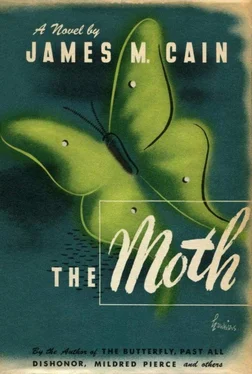
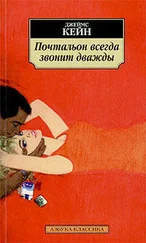
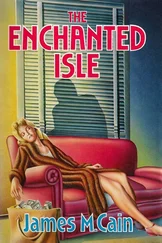



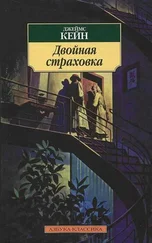

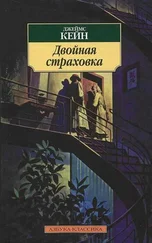

![Джеймс Кейн - Почтальон всегда звонит дважды [сборник litres]](/books/412339/dzhejms-kejn-pochtalon-vsegda-zvonit-dvazhdy-sborni-thumb.webp)
